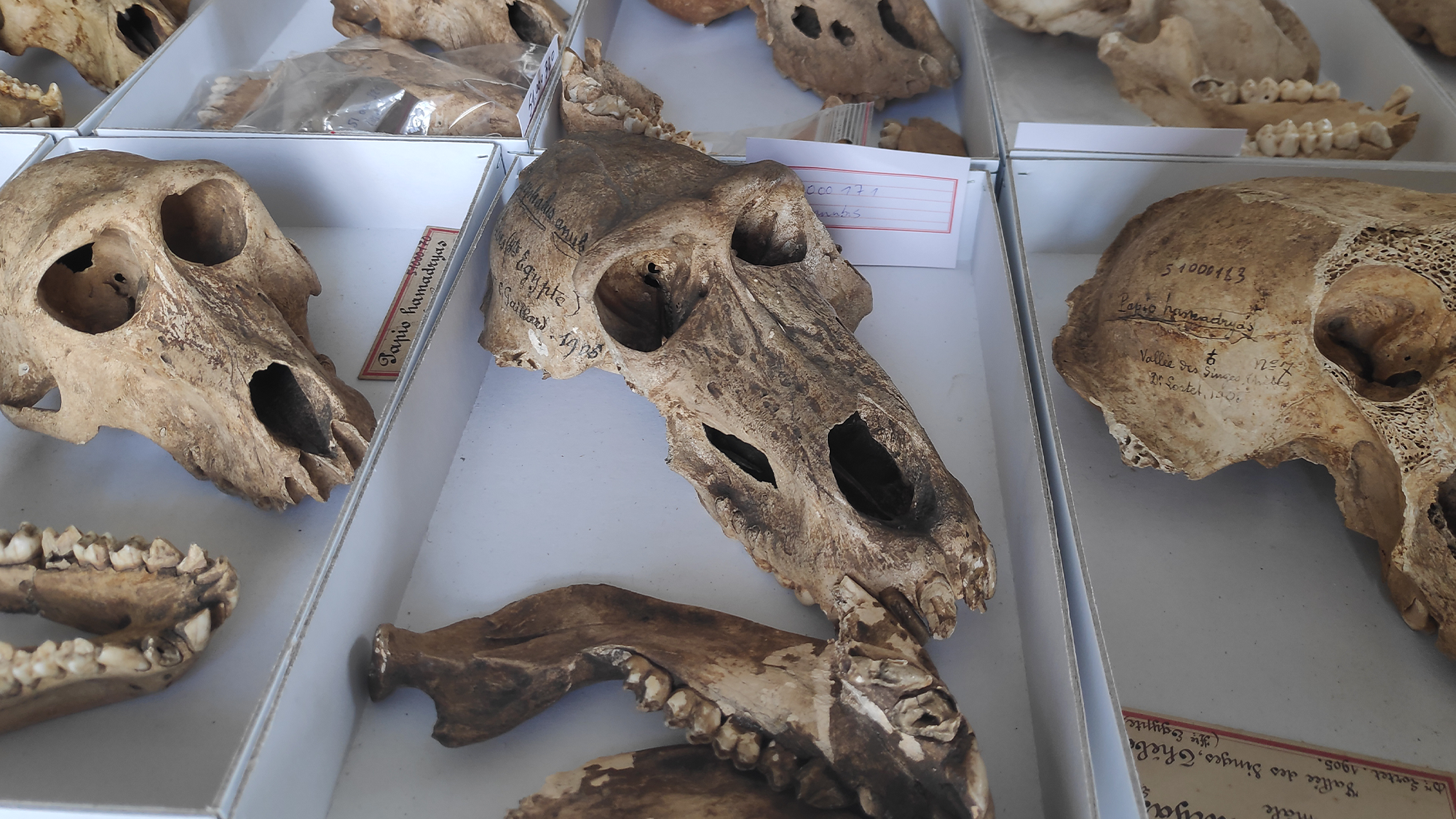

From roughly the 9th Century BC to the 4th Century BCE, ancient Egyptians mummified a wide variety of animal species for religious purposes. These include local crocodiles for the god Sobek, bulls to honor the war god Bouchis, and cats for the goddess Bastet. It also includes some animals that were brought into the area from afar. Some roughly 2,500- to 2,800-year-old baboon remains show signs that the animals were raised in captivity before being turned into mummies. The analysis of at least 36 individual baboons is detailed in a study published December 6 in the open-access journal PLOS ONE.
[Related: This is the best look yet into ancient Egyptians’ mummy-making chemicals.]
“The baboons were revered as representations of Thoth, the god of the moon and wisdom, and adviser to the sun god Ra,” Bea De Cupere, study co-author and an archaeozoologist at the Royal Belgian Institute of Natural Sciences, tells PopSci. “Of all the animals revered by the ancient Egyptians, baboons were the only ones that are not native to Egypt. As such, they had to be imported and were kept in captivity.”
In this study, the team examined a collection of baboon mummies uncovered in 1905 and 1906 from the ancient Egyptian site Gabbanat el-Qurud. Also called the Valley of the Monkeys for these primate remains, the site is on the east bank of the Nile River in southern Egypt near Luxor. The remains belonged to monkeys of various ages and that date back to between 800 to 500 BCE.

The bones had lesions, deformations, and other abnormalities to the skeleton which indicate most of the animals suffered from a lack of sunlight and poor nutrition. These were likely due to being born and raised in captivity. De Cupre says that similar conditions have been seen in baboon remains uncovered from Saqqara and Tuna el-Gebe, two other sites of similar age as Gabbanat el-Qurud.
“The deformities that we observed are typical for rickets, a disease that is caused by chronic lack of vitamin D caused by a lack of sunlight and inadequate food,” says De Cupere. “Baboons are good climbers and they were therefore probably kept in buildings or enclosures with high walls (and roofs) to prevent them from escaping but thus taking away direct sunlight.”
[ Related: This Renaissance-era baby died from living in darkness for a year ]
Studying the mummified remains provides insights into how these imported baboons were treated and kept in Ancient Egypt before their mummification, but there is still more to explore. The authors are beginning to perform microwear analysis on the remains of the baboon’s teeth in an effort to get a better understanding of the types of foods they ate.
If they can extract DNA from the remains, genetic data may also reveal where the animals were caught in the wild and the breeding practices that keepers used. A study of baboons from Egypt’s Gabbanat el-Qurud site published in September found that the remains had some genetic similarities with present-day populations south of Egypt, in the countries of Eritrea, Ethiopia, and Sudan.
According to DeCupere, “We think that the intentions of the ancient Egyptians were good. They most probably tried to take good care of the baboons, but this must not have been easy.”
